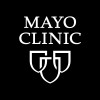The Effect of Ixazomib on the Latent HIV Reservoir
Human Immunodeficiency Virus (HIV)

About this trial
This is an interventional treatment trial for Human Immunodeficiency Virus (HIV) focused on measuring Antiretroviral Therapy (ART)
Eligibility Criteria
Inclusion Criteria:
- The following laboratory values obtained <=14 days prior to registration.
- ANC ≥ LLN (lower limit of normal) and ≤ULN (upper limit of normal), Hgb ≥ LLN and ≤ULN, PLT ≥ LLN and ≤ULN
- Total bilirubin ≤ULN and the direct bilirubin must be ≤ ULN; AST <1.5 x ULN and ALT <1.5 x ULN
- Creatinine <2.0 x ULN and an estimated creatinine clearance > 60 ml/min
- HIV infection with suppressed viral replication on at least 3 active drug ART for at least 6 months
- Suppressed viral replication is defined by plasma HIV viral load <20copies/mL.
- Patient must have HIV viral load <20 copies/ml on two occasions at least 3 months apart.
- In the opinion of the treating physician, patients must have available other regimens likely to suppress HIV should their current regimen fail.
- Male or female patients age >=18 years
- A plasma HIV RNA viral load demonstrating a measure of <20 copies/mL within 30 days prior to study initiation.
- CD4 count >500 cells/mm3 within 30 days prior to study enrollment
- Females must have a negative pregnancy test prior to receiving the 1st dose of ixazomib and be postmenopausal for at least 1 year before the screen visit, or surgically sterile,
Male patients, even if surgically sterilized (ie, status post-vasectomy), must agree to one of the following:
- Agree to practice effective barrier contraception AND a second method of contraception for female partners of childbearing potential during the entire study treatment period and through 90 days after the last dose of ixazomib,
- OR
- Agree to practice true abstinence when this is in line with the preferred and usual lifestyle of the subject. (Periodic abstinence (eg, calendar, ovulation, symptothermal, post-ovulation methods] and withdrawal are not acceptable methods of contraception.)
- AND
- Agree to forego sperm donation for the same period as above.
Exclusion Criteria:
The following laboratory values obtained <=14 days prior to registration.
- ANC < LLN and >ULN, Hgb < LLN and >ULN, PLT < LLN and >ULN
- Total bilirubin >ULN or the direct bilirubin is > ULN; AST >1.5 x ULN or AST >1.5 x ULN
- Creatinine >=2.0 x ULN or an estimated creatinine clearance <=60mL/min
- Diagnosed and treated for a malignancy within 5 years before randomization, or previously diagnosed with a malignancy and have any evidence of residual disease. Patients with nonmelanoma skin cancer or carcinoma in situ of any type are not excluded if they have undergone complete resection
- Any infection except HIV (excluding benign conditions that is unlikely to be affected or modulated by treatment with ixazomib, e.g. stye or furuncle), or treatment with anti-infective agents within 14 days of enrollment.
- Pregnant women
- Women of childbearing potential and Nursing women
- Men who are unwilling to use a condom (even if they have undergone a prior vasectomy) while having intercourse, while taking the drug and for 90 days after stopping ixazomib.
- Any history of peripheral neuropathy, or peripheral neuropathy detected during the screening period.
- Major surgery within 14 days before study registration
- Systemic treatment with strong CYP3A inducers (rifampin, rifapentine, rifabutin,carbamazepine, phenytoin, phenobarbital), or use of St. John's wort.
- Evidence of current uncontrolled cardiovascular conditions, including serious cardiac arrhythmias, congestive heart failure, angina, or myocardial infarction within the past 6 months.
- QTc > 450 milliseconds (msec) for men and >470 milliseconds for women (83) on a 12 lead ECG obtained during the Screening period.
- Known hepatitis B DNA positive status and/or HBsAg positive and/or HBeAg positive, or active hepatitis C replication (HCV RNA positive) or currently on hepatitis C treatment.
- Known history of cirrhosis or active liver inflammation, including "fatty liver" or non-alcohol steatohepatitis (NASH).
- Any serious medical or psychiatric illness that could, in the investigator's opinion, potentially interfere with the completion of treatment according to this protocol.
- Known allergy to any of the study medications, their analogues or excipients in the various formulations.
- Any other recent or concurrent medical condition that, in the Investigator's opinion, would impose any risk to the patient
- Known GI disease or GI procedure that could interfere with the oral absorption or tolerance of ixazomib including difficulty swallowing.
- Participation in other clinical trials, including those with other investigational agents not included in this trial, within 30 days of the start of this trial and throughout the duration of this trial.
Sites / Locations
- Mayo Clinic
Arms of the Study
Arm 1
Arm 2
Arm 3
Arm 4
Experimental
Experimental
Experimental
Experimental
Ixazomib 1 mg
Ixazomib 2 mg
Ixazomib 3 mg
Ixazomib 4 mg
Cohort A: Patients will receive ixazomib 1mg 3 times monthly for 12 weeks, then weekly for 12 weeks.
Cohort B: Patients will receive ixazomib 2mg 3 times monthly for 12 weeks, then weekly for 12 weeks.
Cohort C: Patients will receive ixazomib 3 mg 3 times monthly for 12 weeks, then weekly for 12 weeks.
Cohort D: Patients will receive ixazomib 4mg 3 times monthly for 12 weeks, then weekly for 12 weeks.
Outcomes
Primary Outcome Measures
Secondary Outcome Measures
Full Information
1. Study Identification
2. Study Status
3. Sponsor/Collaborators
4. Oversight
5. Study Description
6. Conditions and Keywords
7. Study Design
8. Arms, Groups, and Interventions
10. Eligibility
12. IPD Sharing Statement
Learn more about this trial
